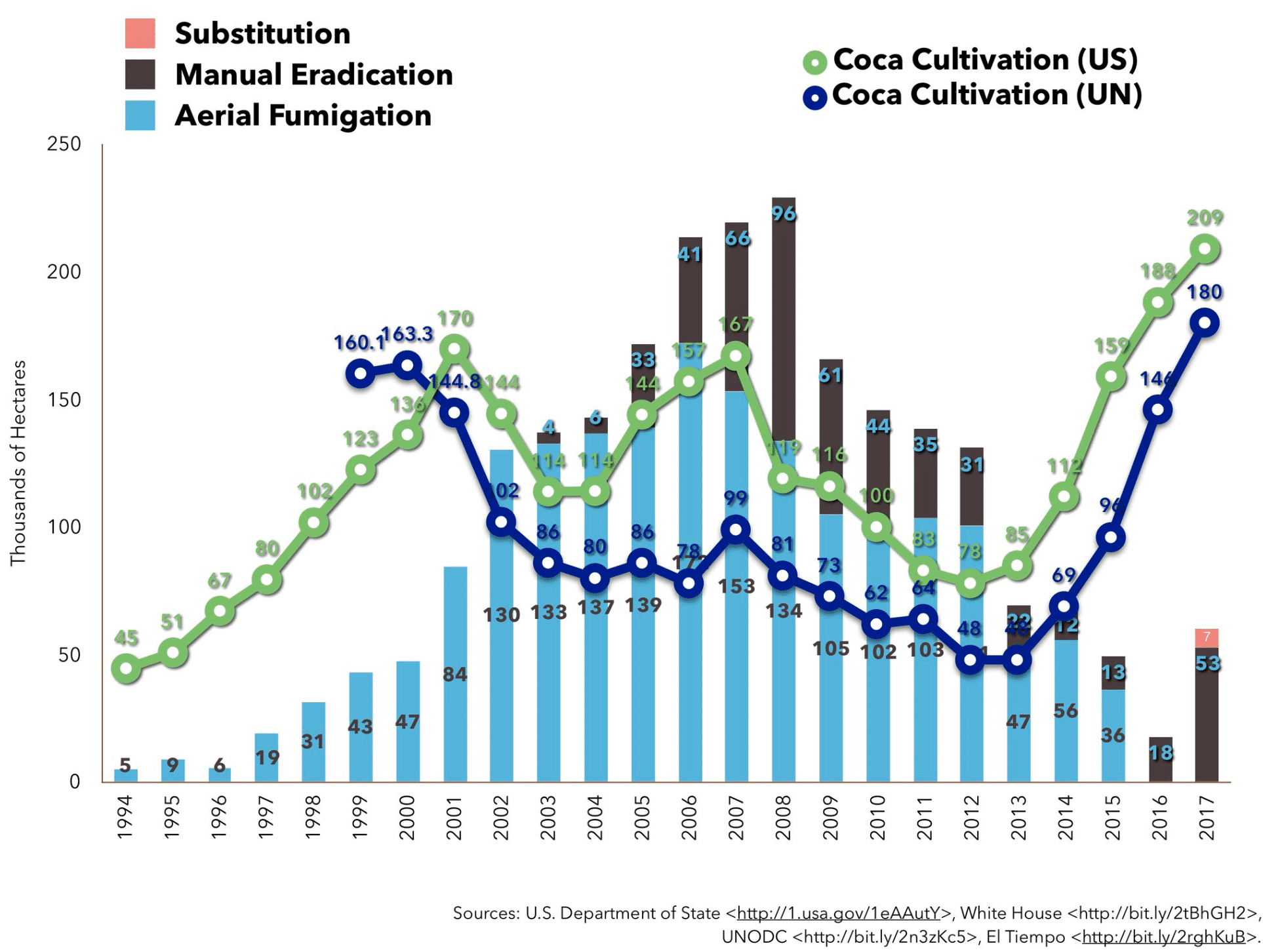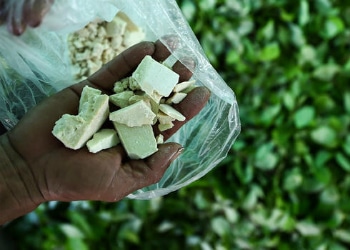US estimates of coca production in Colombia show the Andean nation has set a new record for the amount of the drug-producing crop under cultivation, confirming a trend that has been transforming regional drug trade dynamics.
The estimates, released June 25 by the White House Office of National Drug Control Policy (ONDCP), show that Colombia produced 209,000 hectares of coca crops in 2017, a figure 11 percent higher than the record-setting 2016 estimate of 188,000 hectares.
The White House says cocaine production also increased from 772 metric tons in 2016 to 921 metric tons in 2017, representing a 19 percent rise. However, InSight Crime conservatively estimates that seven kilograms of cocaine can be produced from one hectare of coca, suggesting that nearly 1,500 metric tons of cocaine could be produced from the amount of coca the United States estimates Colombia grew last year.

(Graphic courtesy of Adam Isacson)
ONDCP Deputy Director Jim Carroll said in a press release that the Colombian government “must do more” to address the increase and that the “steep upward trajectory [of coca cultivation] is unacceptable.”
The press release also states that the increase in coca production in Colombia “directly relates” to increased cocaine use and overdose deaths in the United States. However, it is uncertain if increased production has directly led to increased consumption. In addition, drug overdose deaths from cocaine use are increasingly occurring due to the drug being used in combination with powerful opioids like fentanyl, not from cocaine use alone.
InSight Crime Analysis
Increased coca cultivation and resulting cocaine production in Colombia have transformed the regional dynamics of the drug trade in Latin America.
Central American nations that have traditionally played a transporter role in the regional drug trade are seeing the strengthening of local crime groups and increasing corruption of local authorities as a result of the cocaine trafficking boom. For example, drug traffickers are increasingly utilizing Costa Rica to traffic drug shipments, which has corrupted security forces and potentially led to an increase in violence.
In addition, InSight Crime laid out in a recent investigation how increased cocaine production in Colombia has served as more good news for organized crime groups operating in neighboring Venezuela, which is one of the world’s major cocaine trafficking hubs.
And in Colombia, the lucrative drug trade has long been a major driver of criminal conflict — a dynamic that is deepening as the illicit economy expands.
SEE ALSO: Coverage of Cocaine Production
The tough rhetoric used by the United States in the press release suggests that officials feel their South American allies aren’t doing enough to stem record cocaine production.
Adam Isacson, a senior associate at the Washington Office on Latin America (WOLA) think tank, told InSight Crime that the press release was a “clear message” to President-elect Iván Duque that he should shift away from the anti-drug strategies employed by incumbent President Juan Manuel Santos and toward a more hard-line policy.
Indeed, US President Donald Trump threatened to label Colombia not compliant on anti-drug efforts in September 2017, and his administration has also suggested the country re-establish the aerial fumigation of coca crops.
While Duque has expressed support for reinstating aerial fumigation and taking a tougher line on drugs, it’s not clear that such an approach would reverse the years-long upward trend in coca cultivation.
Aerial fumigation has for years been identified as an ineffective strategy for curtailing rising coca cultivation. And as shown by the graphic above, there does not appear to be a clear link between increased eradication efforts and declining production.
Moreover, hard-line anti-coca policies have had negative side effects, including violent, sometimes deadly clashes between coca farmers and state security forces.

